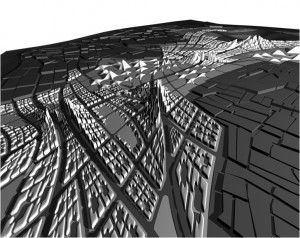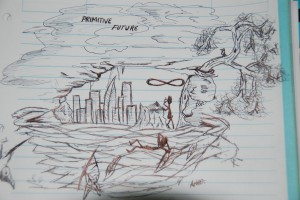Digital logics readings analysis
T6. Parametricism- A new Global Style for architecture and Urban Design
T6. Individual Summary
Parametricism as an increasingly dominant new style among architects, it is rooted in digital animation techniques and it succeeds modernism as a new long wave in systematic innovation. This is how Schumaker introduces this “new” style in the former document.
With the new incoming technologies, Parametricism is turning into the most implemented style among emergent advanced architects all around the world. It´s the new area of study in which the architect designs the most efficient connection between the project itself and the society, depending on the scale, location and environment.
Along this text Schumaker emphasize that each style has it´s hard core of principles and a characterized way of tackling design problem tasks. In which we could find negative (avoid rigid geometry primitives, juxtaposition and repetition of single elements) and positive heuristics (all forms are parametrically malleable, gradually differentiated and systematically correlated).
The implementation and differentiation of the sub-systems within the whole system is basic during all the design process of the project, integrating object parameters, ambient parameters and observer parameters into the system.
The comparison with Le Corbusier´s Modernist urbanism is perfectly explained with the metaphor of the human and the donkey, in which he explains that the human as a superior being, walks in a straight line to reduce distance and time, while the donkey walks in a undefined curvy line avoiding the sun and different obstacles. This is exactly the difference between parameticism and modernism, where one style tries to design in a ordered and humanly logical way, and the other works with the path/line of less resistance.
As a way of trying to explain these donkey path connections, the author uses Frei Otto´s experiments and experience while showing the three fundamental types of configurations, which are, direct path networks, minimal path networks and minimizing detour networks, which somehow explain how nature itself creates its own connection in a different way as modernism does, and these is exactly what parametricism tries to achieve, creating more organic designs for the emergent projects and mostly urban territories.
Text relationship with other groups Topics during final debate
All articles involved in the debate had in one way or another, a relationship with the studied digital logics.
- Theory of transformation.- talks about how all forms and shapes have a relationship with biological/ nature structures and their mathematical explanation, giving the architect the freedom to create biomimetic shapes and understanding how it works.
- Deluce and genesis of forms.- criticizes the western way of thinking in which form is as it is for no explainable reason and says that the importance of the shape is in the process in which it becomes like that, in where the external factors directly affect the final form.
- Rhizome.- uses a philosophical approach to explain the connection between the roots and the log of a tree, and then again the branches to the tree itself. Here we see a connection with the previous text, understanding that the externalities define the final shape or form.
- Towards a theory of architecture.- explains the idea of a visionary architect who many years ago proposed the creation of machines that can learn, from their errors and experience while being operated by a parent machine and yet so by humans. Being able to create capacities such as heuristic processes, learning from memorizing, maping information, understanding externalities and conditions and having the ability to forget non-useful data.
Personal Research Topic
How can rigid geometric primitives interact and help us architects create more efficient parametric designs?
This question is trying to plunge in the parametricism way of designing without leaving aside modernism as we know it, in which the architect while merging both ideas and styles can find the perfect solution for upcoming developments and territories. Is it possible to find a bonding line between both ways of thinking, or one them is the main character of this tale called “Creating spaces as nature does”.


